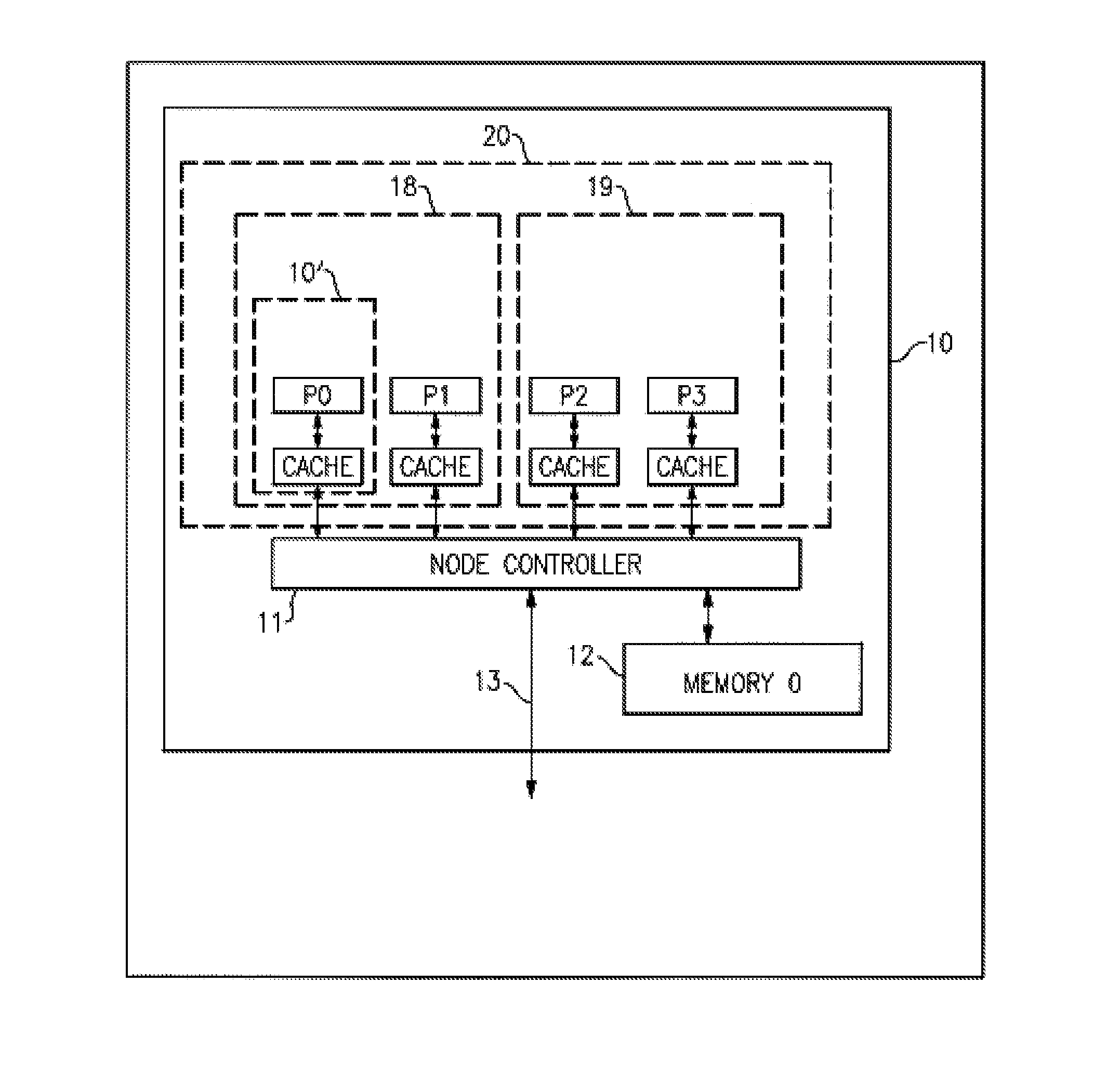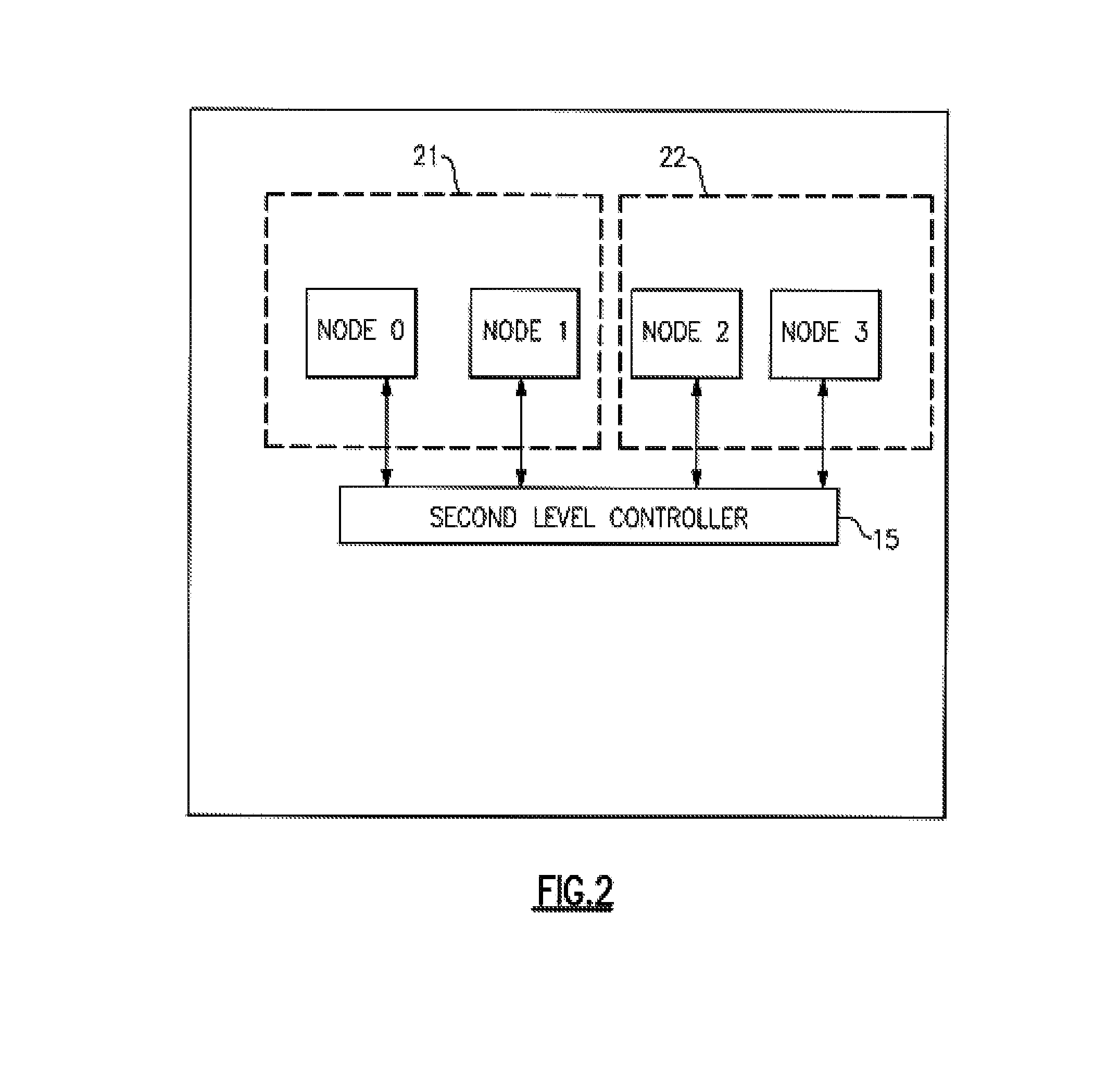Software process migration between coherency regions without cache purges
a software process and coherency region technology, applied in the field of multi-processor computer systems, can solve the problems of prior-art system design poor scaling, prior-art multi-processor cache design not scaling well for partitioned workloads,
- Summary
- Abstract
- Description
- Claims
- Application Information
AI Technical Summary
Benefits of technology
Problems solved by technology
Method used
Image
Examples
Embodiment Construction
[0031]Turning now to FIG. 1, a block diagram of one embodiment of one node (10) of a computer with dynamic coherency boundaries is shown. FIG. 1 shows a plurality of processors P0-P3, each with a cache, attached to a local node controller (11). The local controller connects multiple processors together with a DRAM main storage element (12). Storage transactions that are initiated by a single processor are transmitted to the node controller which may in turn transmit the transaction to any or all of the other processors in the node. The node controller may also transmit the transaction on bus (13) to other parts of the computing system which contains additional processors (not shown). The Active Coherency Region Table (14) is used by the node controller to determine the proper cache state transitions required in response to storage requests which are entering the node on the bus (13) from other parts of the computing system (not shown). FIG. 2 shows how multiple instances of node (10...
PUM
 Login to View More
Login to View More Abstract
Description
Claims
Application Information
 Login to View More
Login to View More - R&D
- Intellectual Property
- Life Sciences
- Materials
- Tech Scout
- Unparalleled Data Quality
- Higher Quality Content
- 60% Fewer Hallucinations
Browse by: Latest US Patents, China's latest patents, Technical Efficacy Thesaurus, Application Domain, Technology Topic, Popular Technical Reports.
© 2025 PatSnap. All rights reserved.Legal|Privacy policy|Modern Slavery Act Transparency Statement|Sitemap|About US| Contact US: help@patsnap.com



